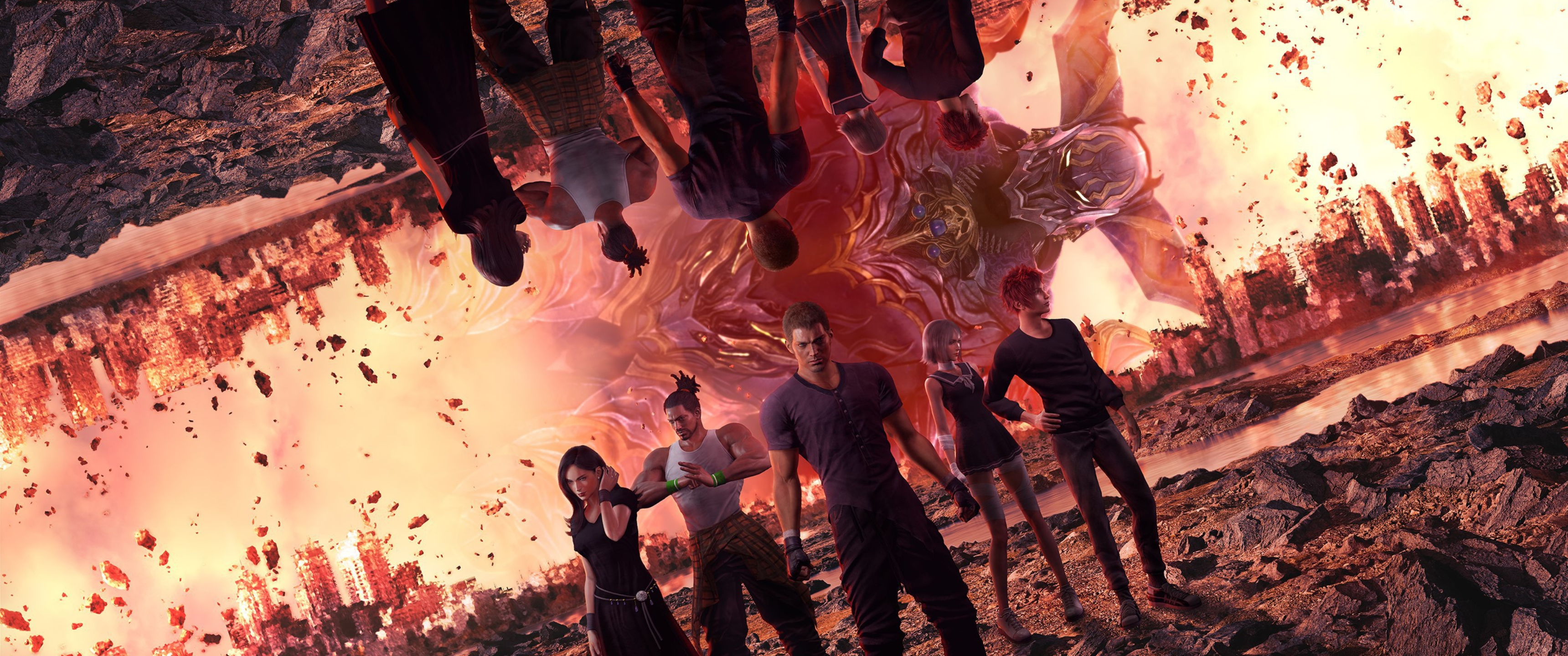Early Verdict
Strangers of Paradise: Final Fantasy Origin shines when diving deep into its Job systems and going toe-to-toe with a challenging boss or enemy. However, these exciting moments are undermined by unappealing environments, an insipid aesthetic and linear level design.
Pros
- +
Great combat system
- +
Every boss is a dance
- +
Impressive ability diversity
- +
Hilarious cutscenes
Cons
- -
Repetitive side-missions
- -
Linear level design
- -
Dull lighting and color palette
- -
Empty environments lack intrigue
Why you can trust Laptop Mag
Strangers of Paradise: Final Fantasy Origins is a new action RPG from Team Ninja, the developers behind Nioh and Ninja Gaiden. And although it shares the name of one of the most iconic franchises in video game history, it carries almost none of the visual magic found in its predecessors. Hindered by an artificially faded aesthetic and graphical fidelity akin to an early PS3/Xbox 360 game, the omission of unique ideas or stories within the environment design saps the joy of exploration.
On the other hand, Team Ninja has taken some of the best elements found in Nioh’s combat and implemented them in ways that are equally satisfying and brutal. With the addition of Final Fantasy’s classic jobs and magic systems, the game has a distinct feel from its inspirations. There’s not much substance here, but demanding boss fights, goofy dialogue and a considerable degree of ability diversity make Final Fantasy Origins dumb fun.
CHAOS! CHAOS! CHAOS!
Final Fantasy Origin’s narrative is as simple as it gets: Four Warriors of Light are on a journey to defeat Chaos. Every cutscene is about Chaos, and you could make a great (although likely short-lived) drinking game for each time the word is uttered. There are no details on these characters beyond that initial premise so far, mostly due to their memory loss.
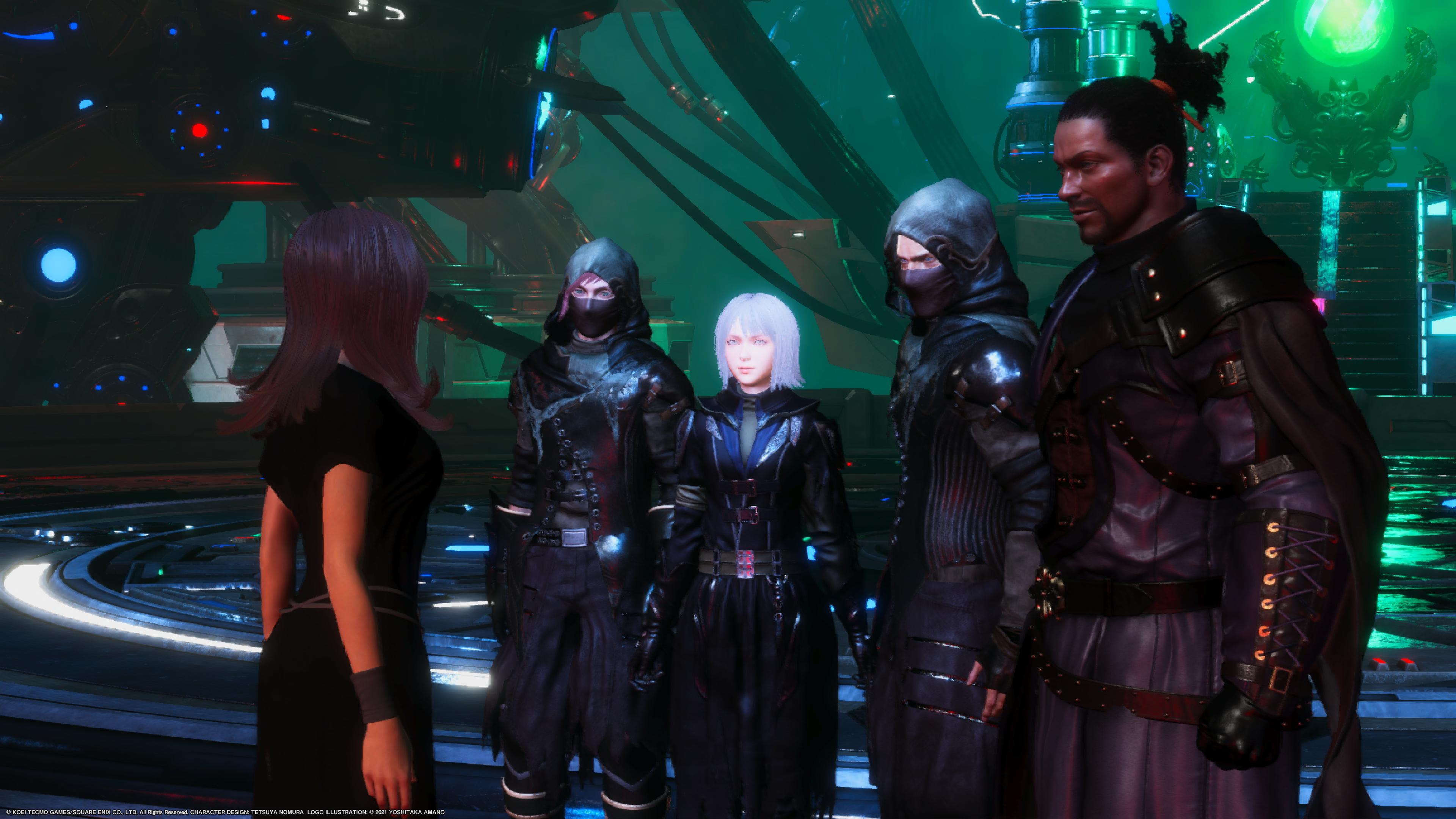
It’s hilarious how the protagonist, Jack Garland, interacts with other characters throughout the story. One cutscene in particular showcases Neon, one of the four Warriors of Light who joins the party after the first mission, diving deep into how Chaos never actually existed. Before she can even finish her claim, Jack simply mutters “bullshit,” turns around, plays hard rock on his MP3 player, and walks away. I chuckled for a good few seconds.
Another scene has the party interacting with the Dark Elf King, Astos. As he explains that they must make a deal with Chaos and potentially sacrifice their lives, Jack chuckles and says, “I forgot what it’s like to hear some good news for once.” He is constantly edgy and standoffish; even if the game isn’t being intentionally funny with these mannerisms that are reminiscent of a little kid, it still cracks me up.
Masochistic bliss
Final Fantasy Origin’s multiple defensive systems force the player to adapt to each foe in different ways, especially when you’re on the hardest difficulty. Players can block and dodge, but the star of the show is the Soul Shield. This is similar to the parry in Sekiro: Shadows Die Twice; when pressing Circle, a magically infused vortex appears in front of you for a short time, and if you use this right before an enemy strikes, you negate the damage and increase your maximum Mana Points (MP).

MP is used to execute special abilities, and depending on what weapon you have equipped, these powers can skewer bats with a halberd, conjure water to put out a fire, or enable a mid-air flip with a greatsword to crush a wolf. There are also abilities that can be used regardless of what weapon you have equipped. This includes Lightbringer, which strengthens your weapons and provides a temporary boost to your Break Gauge.
Sign up to receive The Snapshot, a free special dispatch from Laptop Mag, in your inbox.
With every block and use of Soul Shield, you lose part of a yellow bar positioned at the bottom of the screen. If this fully depletes, you will be temporarily stunned, and enemies have free reign to obliterate you. To recharge the Break Gauge, you need to be passive for a short time. This forces you to be careful about how you use your Soul Shield and how often you block an attack. This adds a much needed element of strategy to the combat since there is no stamina bar.

You also need to be careful with your MP, as it takes a while to recharge in the midst of battle. Players begin each new life with two bars of MP, and there are two ways to increase its size. The first method is to successfully use Soul Shield right before an enemy hits you, and the other is to destroy an enemy’s Break Gauge and perform an execution that instantly destroys them. Lowering the enemy’s Break Gauge can be done with consecutive attacks, but if you stop the onslaught, that meter will begin to recharge.
Players need to balance aggressive strikes with deflecting attacks, maintaining a healthy Break Gauge, and gaining enough MP to deal additional damage. This combination of thoughtful elements keeps the player engaged and makes new encounters satisfying. Beyond the structure of combat, character animations seamlessly weave into one another and each movement feels responsive.
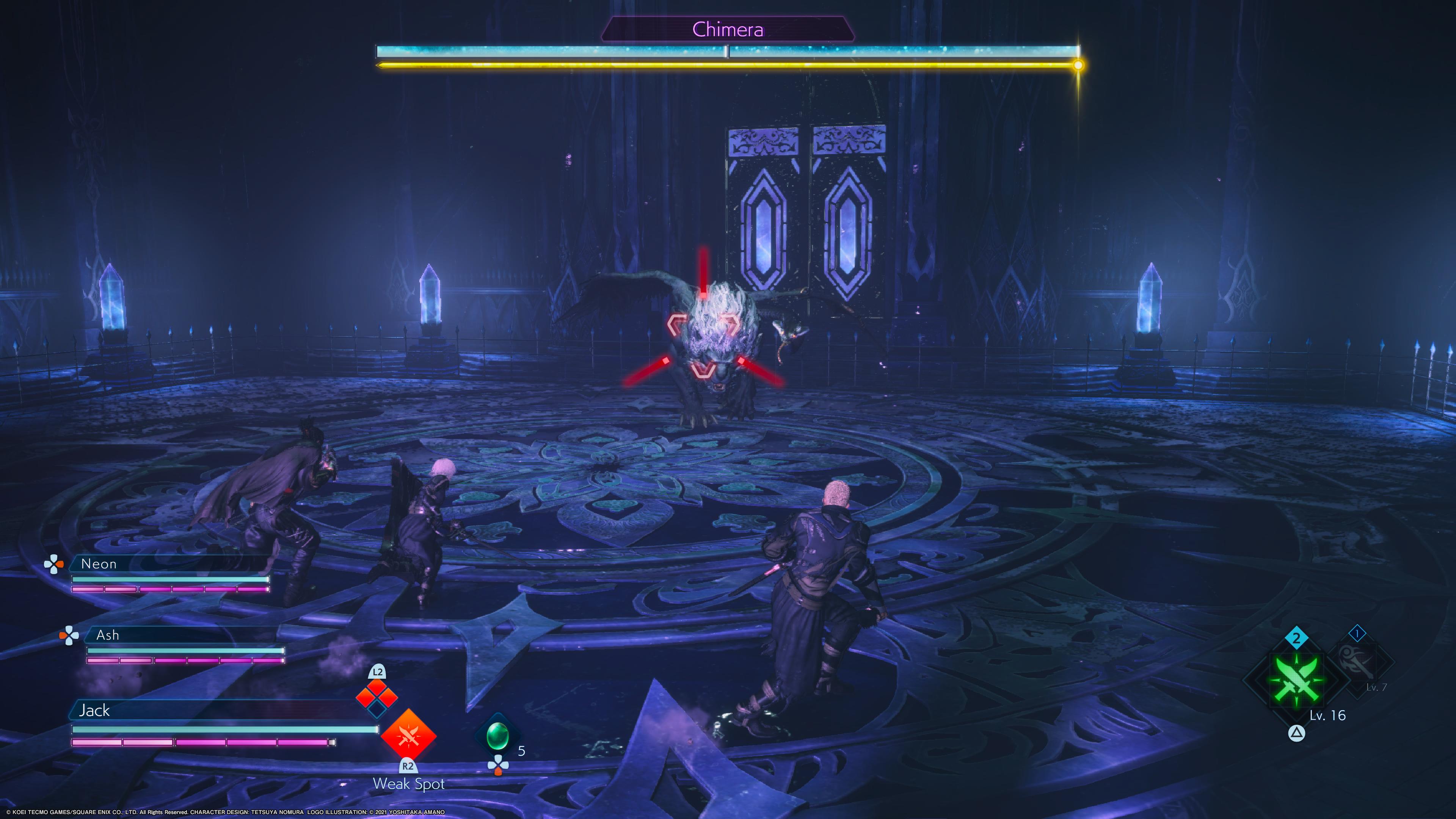
Strangers of Paradise is most engaging when players challenge an area’s boss. Expertly utilizing the Soul Shield against every attack and learning when to dodge or block makes each boss fight feel like a dance. There’s an expected action the player must take to survive, akin to a rhythm game. I’ve been most successful against bosses when I am completely calm, don’t make any unneeded actions, and focus on responding to attacks as opposed to taking aggressive action.
On Hard, players will need to memorize the appropriate response to every enemy attack, and during periods of intense struggle, they must strategize when to use their limited MP to activate a special move like Lightbringer. This provides a huge (but temporary) boost to the player’s Break Gauge, allowing them to use Soul Shield more often without the fear of being stunned. Activating this ability shortly before my Break Gauge depletes is what keeps me safe throughout a boss fight, but I always try to save MP for my other special moves, making every difficult fight a balancing act atop a tightrope.
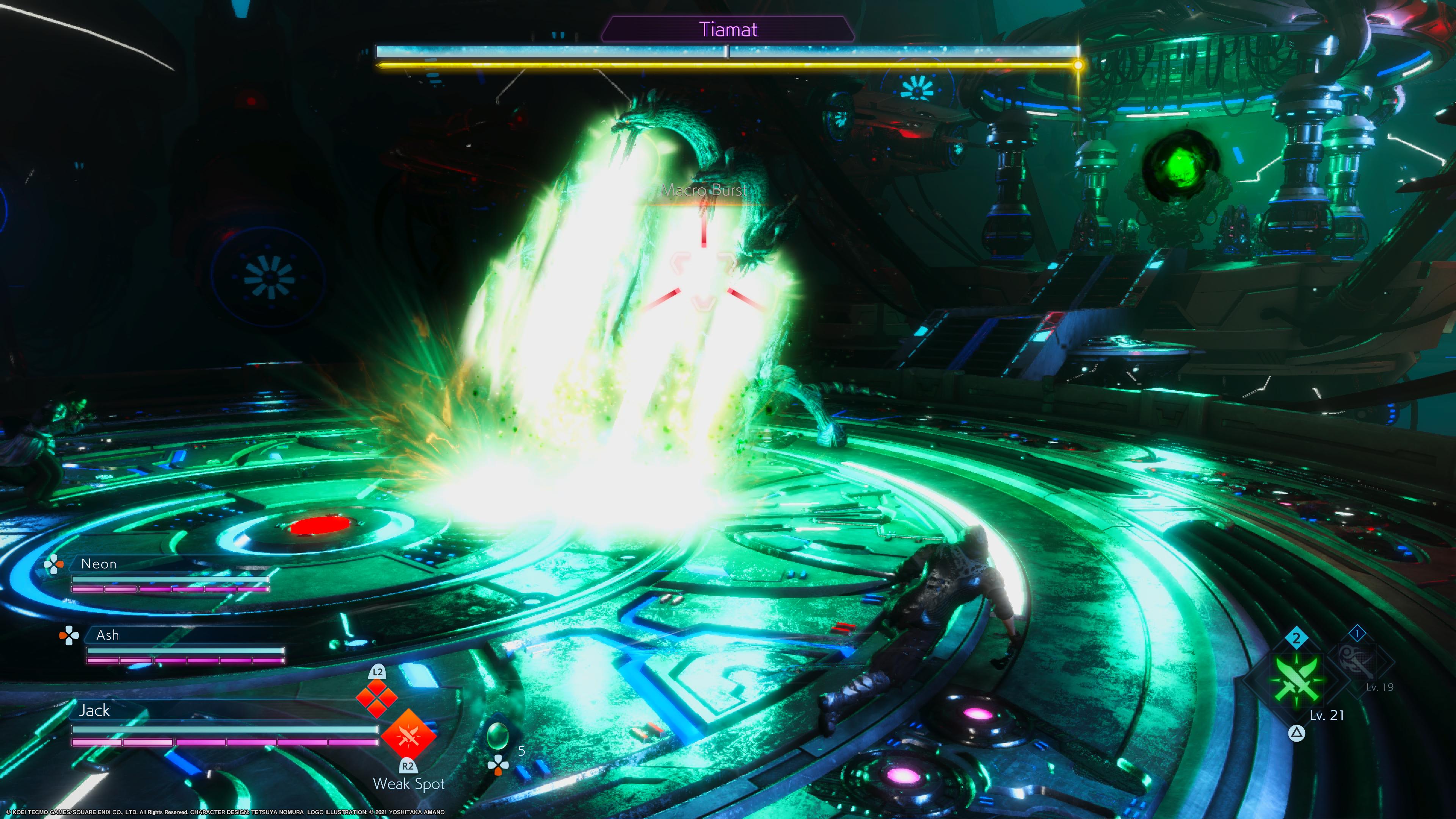
One boss in particular took me over an hour to defeat. During my winning battle, I got through the first half of the fight without taking a single bit of damage, perfectly deflecting and dodging every attack they could throw at me. I'm impressed by how Strangers of Paradise forced me to master its combat system, and once doing so, I could combo one move after the other without making mistakes. This is a testament to how tight a battle can feel, as the game rewards those who take the time to master it.
Satisfying Job progression
In Strangers of Paradise, players can utilize broadswords, greatswords, katanas, clubs, axes, knuckle weapons, dual blades, lances and shields. Through the Job system, unique skills can be attached to those weapons, but most Jobs are limited to a specific set of weapons. For example, the Swordsman Job can only use a greatsword. The Swordsman tree provides abilities and buffs, from simple things like increasing strength to more complex additions like a skill that lets the player do a mid-air double slash.
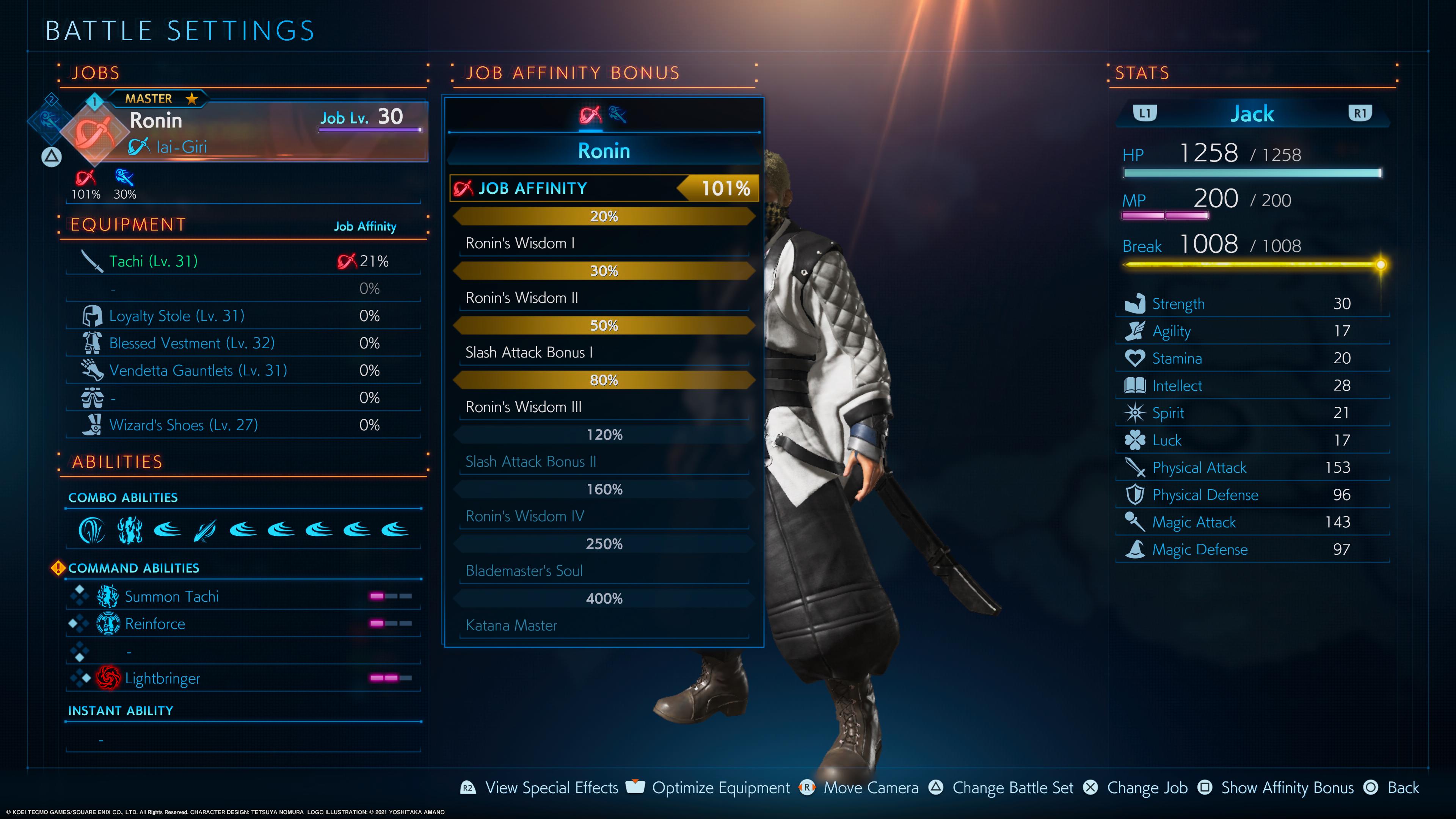
These Jobs can also lead into an Advanced version. For example, upgrading the Ronin Job leads into the Samurai Advanced Job. However, some Advanced Jobs have multiple requirements. The Swordsman can lead to the Warrior, but you’ll also need to upgrade the Ronin first. Once that’s done, the Warrior will become available, which is compatible with every weapon except for clubs.
Players can then choose which version they prefer; the Swordsman has an offensive ability that lets them keep swinging their greatsword wildly, while the Warrior can use a defensive power that staggers nearby enemies and slowly regenerates health.

At the time of writing, the Basic Jobs available to me are Swordfighter, Swordsman, Ronin, Pugilist, Marauder, Mage, Duelist, and Lancer. And when scrolling through the Advanced Jobs, I could jump into the Red Mage, Black Mage, White Mage, Knight, Berserker, Warrior, Samurai, Thief, Monk and Dragoon. Players can only have two jobs equipped at a time, but the potential diversity of abilities allows for an exciting degree of experimentation.
In particular, I had a blast with the Ronin, which allowed me to hold R1 shortly before constantly pressing it to unleash an unending flurry of cuts against my opponents. But the star of the Ronin Job is its special R2 move, Iai-Giri, which allowed me to sheathe my weapon for a period of time before unleashing a devastating strike. Another great attack called Hyakugetsu obliterates foes with a vertical slash, which was especially useful when battling flying Griffons and Harpies.
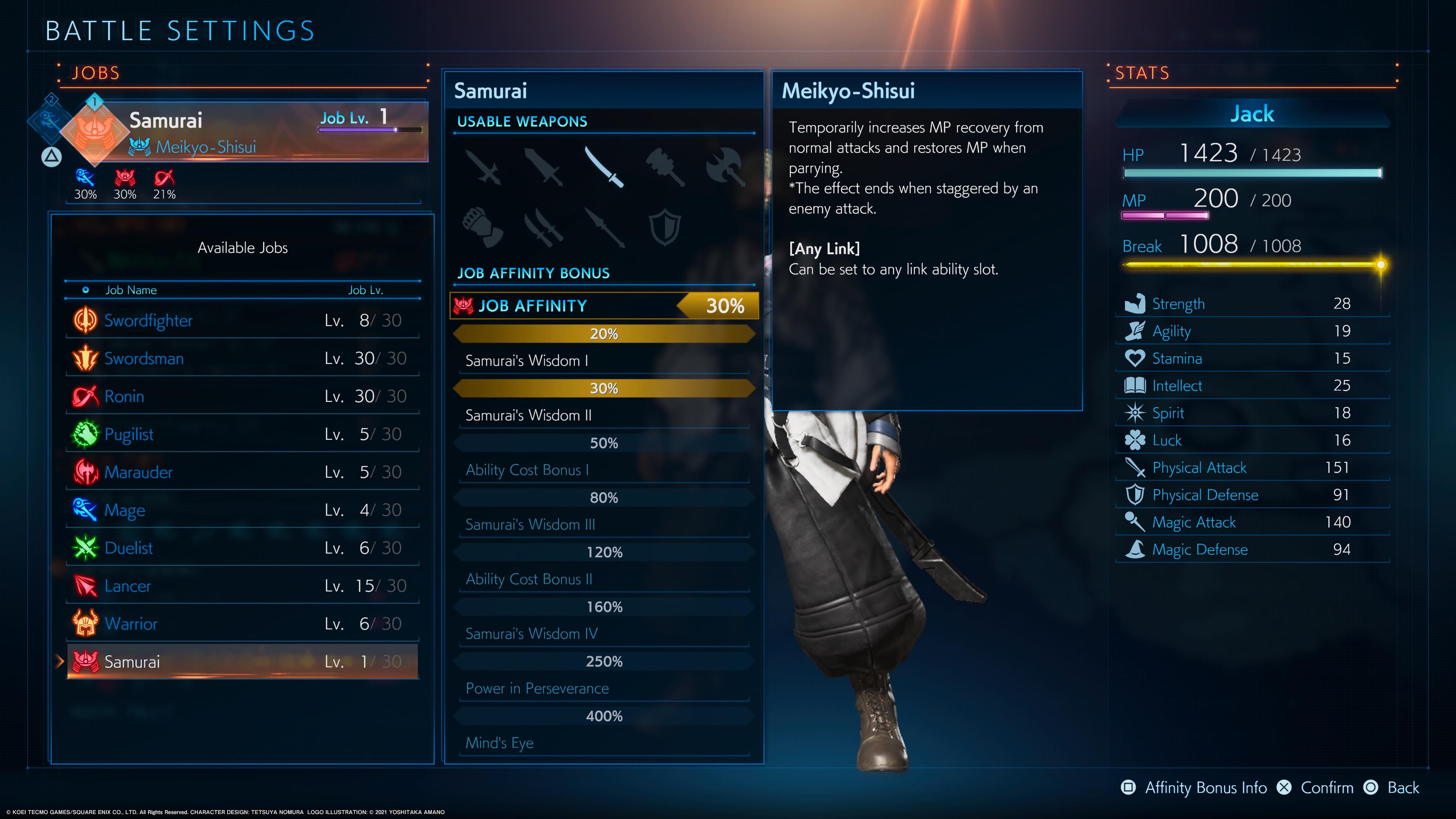
The Mage is especially unique, as players can use Fire, Blizzard, Thunder, Water, Quake and Aero spells immediately. And with the Black Mage, Flare is available, although it takes a considerably more MP to execute. It’s also awesome that the upgraded versions of these spells are executable as long as you hold the attack button. For example, if you keep holding R2 while casting a spell, Fire will upgrade to Fira, and then Firaga.
Jarring environment design
Strangers of Paradise presents a derelict world where Chaos has wrought destruction throughout each region. Similar ideas have been tackled excellently before, with classics from Fumito Ueda like Ico and Shadow of the Colossus taking the cake. Hidetaka Miyazaki, the brilliant director behind Elden Ring, Dark Souls, Bloodborne, Demon’s Souls and Sekiro, has previously stated that Ico showed him what video games could do. And with Demon’s Souls and Dark Souls, it’s clear how he was inspired by the works Ueda and his team crafted.
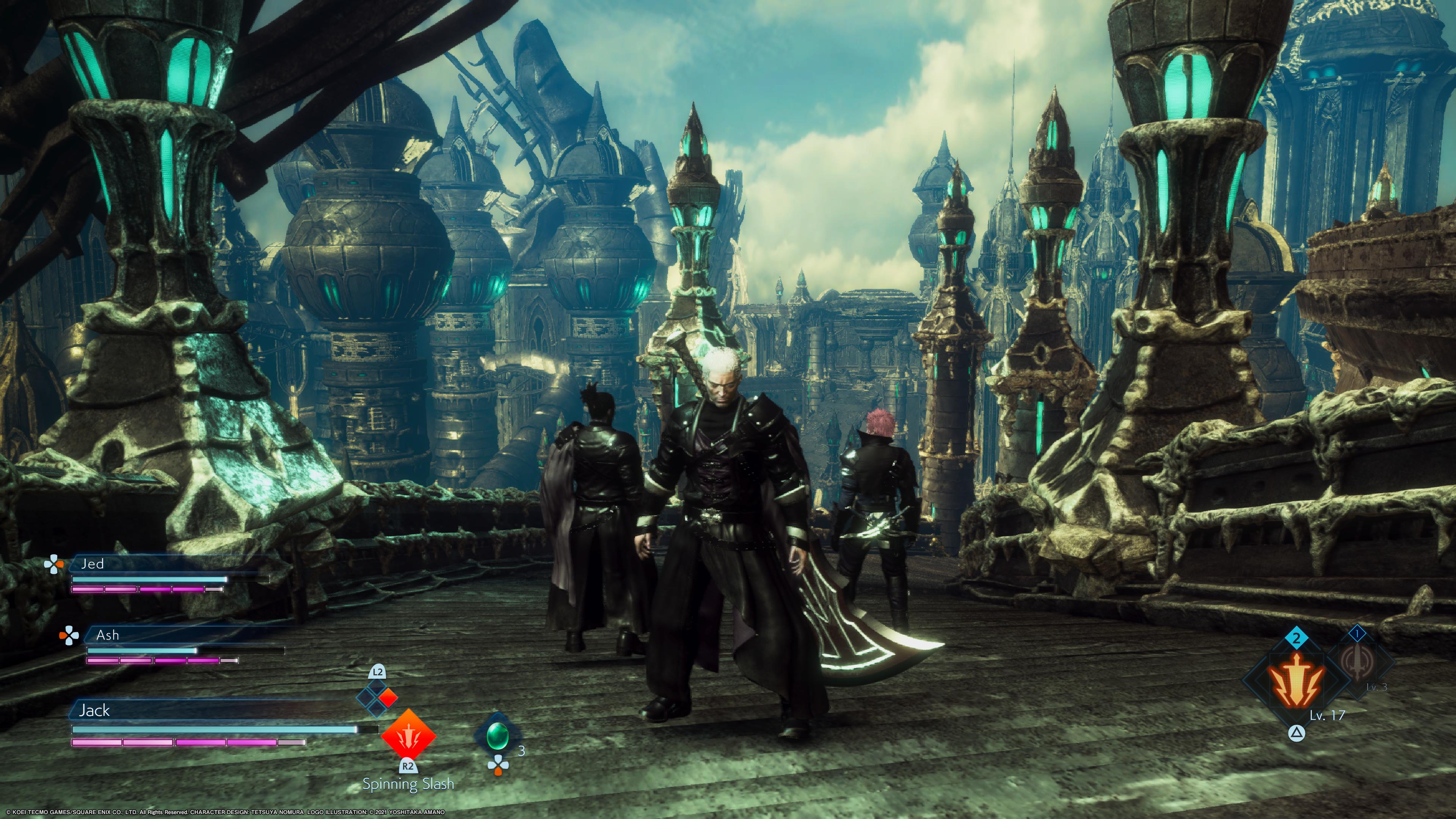
These games understand the importance of silence. Not only do they utilize faded colors to translate the state of post-death, but they evoke hopelessness by focusing on atmospheric sound design and environments that are void of life yet incredibly beautiful. Instead of using subtle hues to translate the lifelessness of this world, Strangers of Paradise seems like it has an artificial filter over it that corrupts the naturalness of each color.
Gentle despair is compelling; it’s easy to fill your world with blood and death, but a true sense of desolation is something that Final Fantasy Origin fails to accomplish. Electronic music is constantly blasting between every battle, and the main character makes cheesy remarks with each kill. If Team Ninja’s intention was for the game to appear cool and edgy, the aesthetic should be stylish. Instead, it’s poorly lit, possesses minimal detail between rooms, lacks an exciting color palette, and has an eye-straining choppiness.
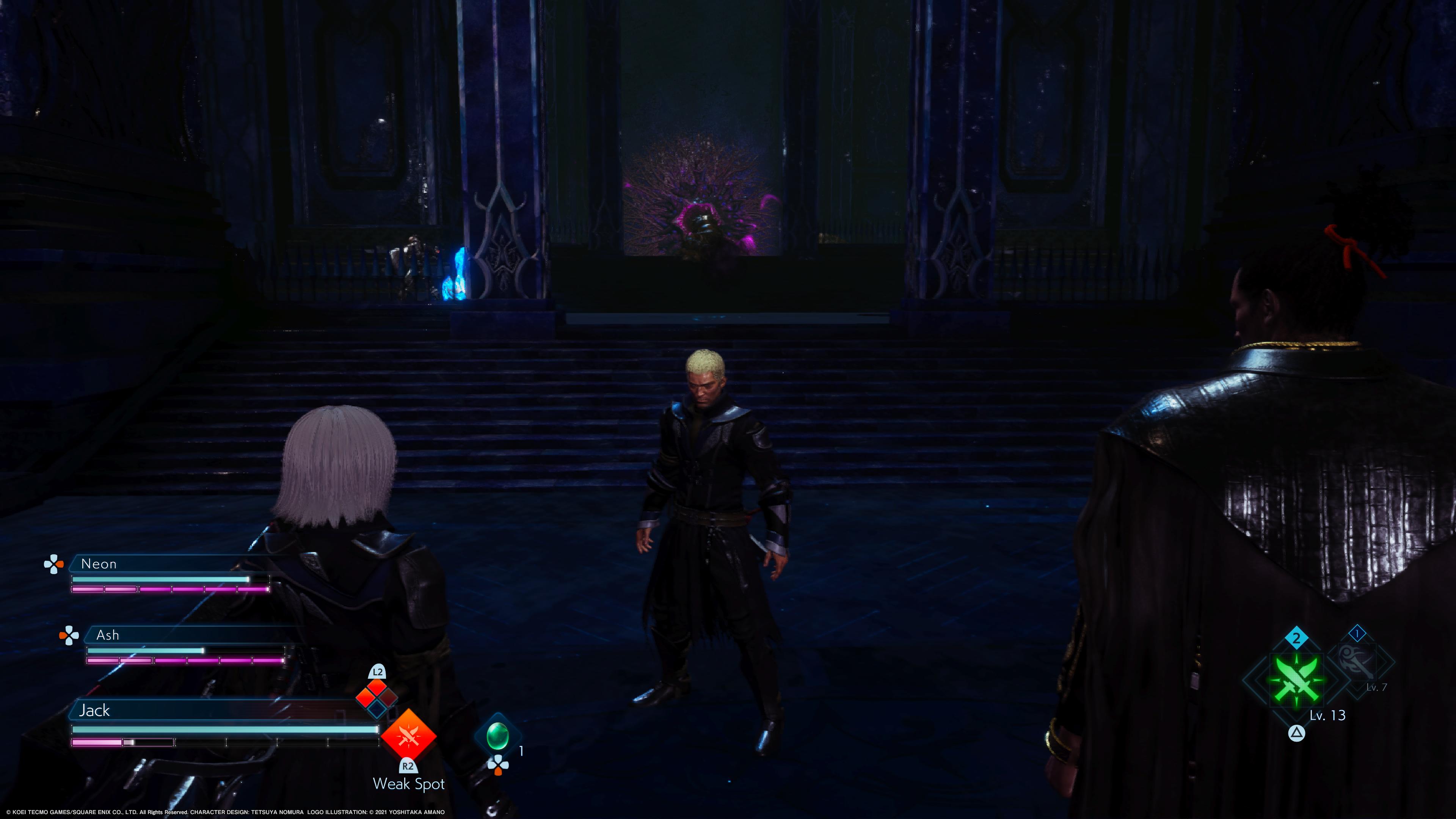
Final Fantasy Origins tells its story in a dead world. It’s meant to look faded, colorless, and uninhabitable, but Team Ninja leaves much to be desired. These areas omit the details that could make a player wonder about the intricacies of its lore. Scenes aren’t detailed beyond their initial premise, as forests offer nothing but trees and grass, caverns present stone walls and a few barrels, while kingdom’s feature vacant rooms with the occasional chest nearby.
It’s easy to compare these moments to Dark Souls, but an area like Darkroot Garden comes to mind, as it featured fascinating stone structures, huge bridges that connected different parts of the forest, and a perplexing mistiness to the atmosphere that made it feel ethereal. Through this dim thicket, players fought terrifying Ents, Great Stone Knights, Mushroom People and creepy frog-creatures. You’d occasionally see a tree that looks slightly off colored, and you could kill it to reveal a new path.
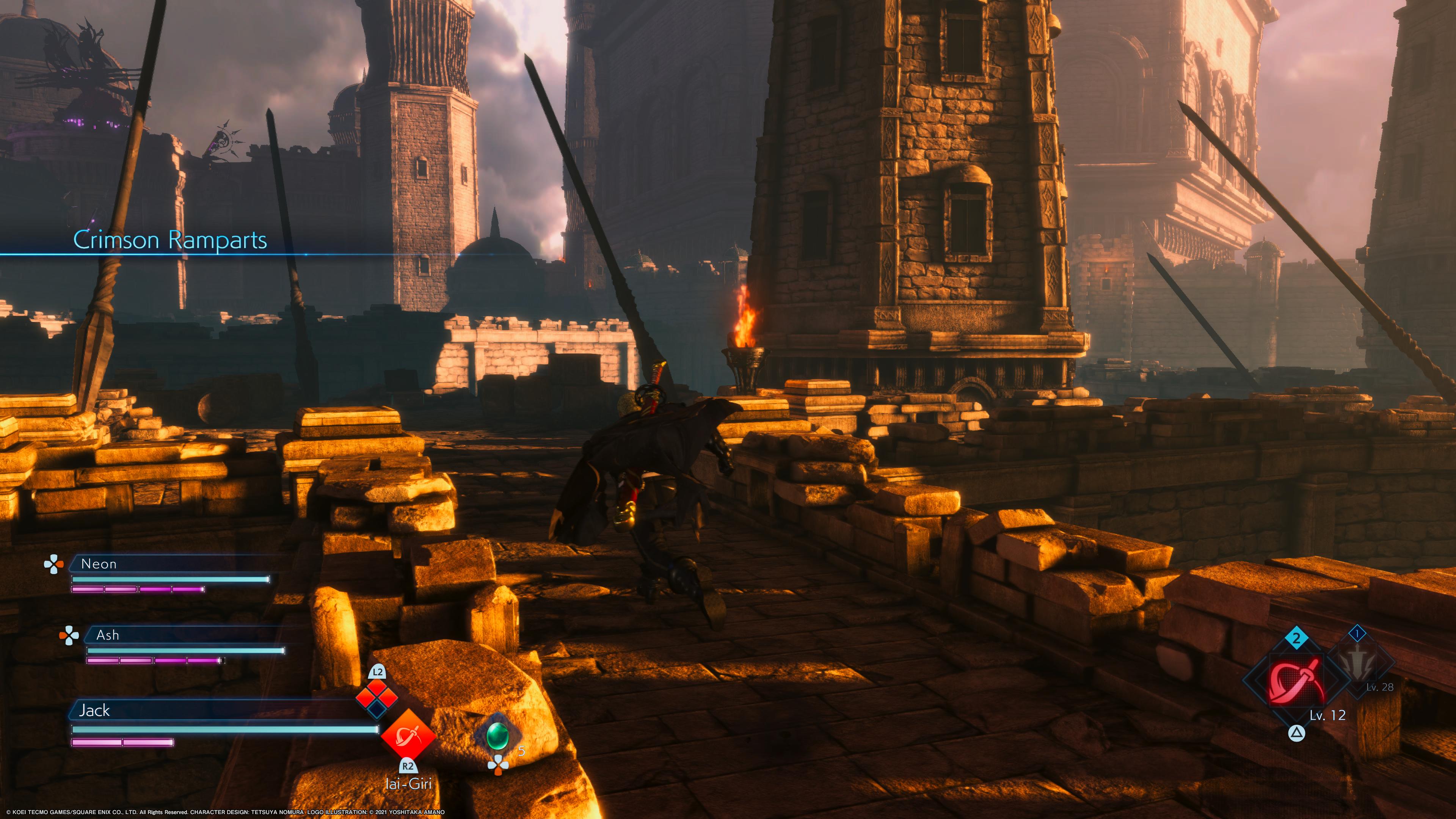
And to enter a new part of the area, you’d need to buy the Crest of Artorias to unlock the entrance to the Hunter’s Woods. And within Darkroot Garden, players would fight the iconic Moonlight Butterfly along a thin bridge, or battle the legendary Great Grey Wolf Sif. And if you took one wrong turn at the start of the level, you’d find yourself at the bottom of the forest as Crystal Golems lurked towards the path of a gigantic Hydra. Perhaps it’s unfair to compare Final Fantasy Origin to one of the greatest games of all time, but Dark Souls is more memorable in a single area than the entirety of Strangers of Paradise thus far.
Even when an immaculate backdrop is present, it's typically made up of dozens of round towers placed throughout the scene. The simplicity behind every set piece makes it difficult to connect to an area; whereas other games of this kind use little details to tell a story, Strangers of Paradise fails to present an environment worth thinking about.
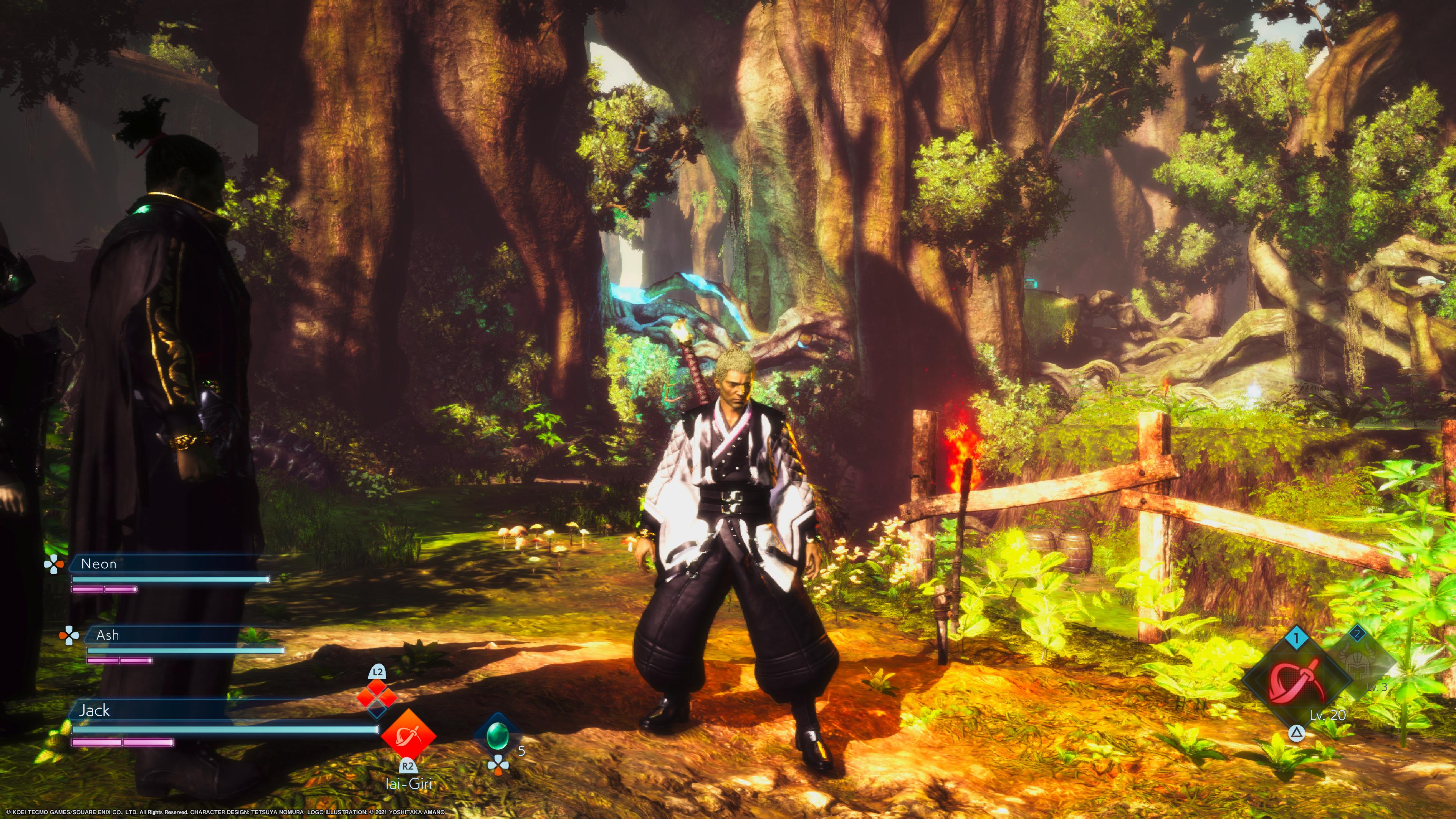
Strangers of Paradise has levels full of color, but it's not handled well. These sections are oversaturated and appear synthetic, causing some eye-strain while exploring them. Final Fantasy Origin fails to strike a middle-ground between these two aesthetics, as one level can appear dull and colorless, while the next will have the saturation is cranked up to a displeasing degree.
An unappealing structure
Strangers of Paradise’s structure is identical to Nioh’s, as players engage in missions from an overworld view. Jumping between disconnected levels dotted along a map void of detail makes it difficult to get invested in this world. At least the map in Nioh was interesting to look at, featuring a compelling parchment aesthetic, outlined mountains, and calligraphy along the landmasses of Japan.

When jumping into a mission, levels are overwhelmed by linear corridors. Players can rarely explore missions in an interesting way, as there are no winding roads or open areas. It’s disappointing to see when both Nioh games feature labyrinthian designs with interesting secrets and alternate paths. Even when that’s not the case, Nioh has an openness to each environment that evokes a sense of wonder when deciding which direction to tread. Western Keep had a couple of branching paths that excited my curiosity, but most areas within Strangers of Paradise don’t share this trait.
Side-missions also retread previous levels, often forcing the player to explore it backwards. Players redo these missions to fight a stronger version of an enemy, but so far it’s been something like a Griffon or a Coeurl, which are easily found in main missions.
Bottom line
Stranger of Paradise’s addicting combat system forces players to balance offensive and defensive maneuvers in their battles against classic Final Fantasy enemies. Its utilization of Jobs to create considerable diversity in abilities is promising; every time I unlocked a new weapon or class, a whole new playstyle opened up, and the ease with which I could shift between these kept gameplay fresh.
However, Final Fantasy Origins looks dreadful, and it’s hard to get fully invested in the experience when each area is barren and colorless. Regardless of how much I enjoy playing the game, the environment design is the worst I’ve seen from an AAA game in years. An intentionally faded world can really work, but when the assets placed throughout the environments have no gripping stories to tell, the game is just ugly.

Self-described art critic and unabashedly pretentious, Claire finds joy in impassioned ramblings about her closeness to video games. She has a bachelor’s degree in Journalism & Media Studies from Brooklyn College and five years of experience in entertainment journalism. Claire is a stalwart defender of the importance found in subjectivity and spends most days overwhelmed with excitement for the past, present and future of gaming. When she isn't writing or playing Dark Souls, she can be found eating chicken fettuccine alfredo and watching anime.
